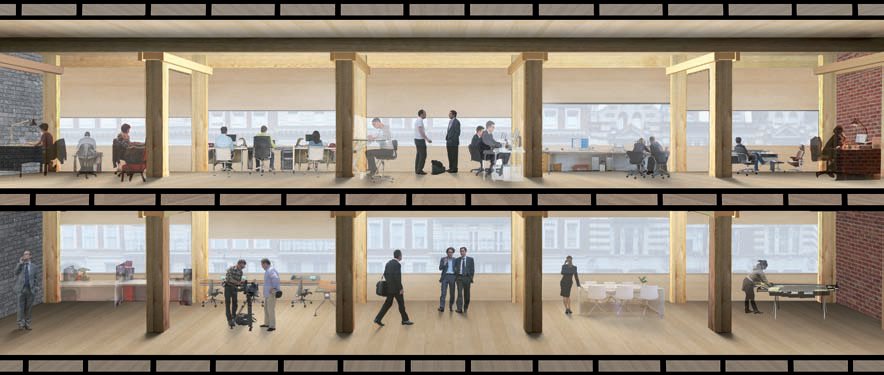Home Improvement
A Brief History Of Timber And The Building Sector

British historical records note that timber was first used on a widespread scale during the 14th century when timber was used as a raw material in the building of numerous components of ships such as masts, planks and spars.
During the 14th century the Britain’s need for timber created a trade market with Norway – a country with an area of land that had a large amount of forestry coverage which therefore made it the perfect exporter of timber parts.

Ship Building Goes Mainstream
Over the course of the next 200 years Britain continued to source its timber largely from Norway’s seemingly un-diminishable supply. The imports of timber into the UK from Norway reached a peak between 1586 and 1587 as England build vast numbers of ships so as to be able to prepare numerous fleets of naval ships designed to combat against Spanish invaders. Whilst, in addition to the military’s demand for timber, there was also an increase in demand for the product as a result of the burgeoning whaling vessel trade and the merchant shipping industry.
More Widespread Use of Timber in Building
Between 1799 and 1802 an intensive period of demand for timber occurred in the UK. This came as a result of an increasing British population, an ever expanding economy and the need to house the increased population in new building projects.
By this point in history timber was being imported into the UK in bulk (usually as whole logs as opposed to individual smaller pieces) and sawmills had sprung up in and around the majority of large UK towns which shaped the timber logs in to different shapes and sizes for various uses.
Decorative Timber
The arrival of the 19th century brought with it a new lease of life for the timber industry. By 1835 timber was now being imported into the UK as a finished product and trade routes that dealt specifically in timber has been established with Germany and Holland. These were two countries which were also by now heavy populated with sawmills and companies that specialised in shaping timber into a finished product.
To this end, manufactured wooden goods were now arriving in the UK in the form of oars, tubs, barrels, pipes and furniture which marked one of the earliest instances of timber being used on a larger scale for decorative purposes as opposed to it being used for a functional need.
Timber in the Building Industry
By the 1900s the timber trade had evolved to further incorporate the fishing and building industries. Many established UK timber companies began to produce wooden boxes lined with aluminium so as to enable fishing companies to transport their hauls more conveniently. Whilst the building industry began to use sawdust (which up until this point had simply been burnt after the daily activity of a sawmill was over) as a filling agent in plastics and linoleum.
Timber Laths
Perhaps the most beneficial use that the building industry has found for timber over the past two hundred years is in timber laths. Timber laths combined with lime plaster provided a reliable method of building interior walling for millions of homes.
The added benefit of using timber lath alongside lime plaster meant that walls could be reinforced by the builder’s purposeful overuse of lime plastering. Indeed, originally builders simply used lime plaster as a bonding agent as a means with which to horizontally glue one piece of timber lath to another and applied a thin layer of lime plaster to each piece of timber.
You Can Never Use too Much Lime Plaster
The idea was then hit upon to use much more generous amounts of lime plaster when sticking one piece of timber lath to another as it was noted that the process of overspreading the plaster allowed it to ooze behind the timber and create a much stronger bond and much safer interior walling. Indeed, the generous use of timber lath in building still continues in this fashion to his day.
Nick Thorping is a writer who has a keen interest in the building sector. He recommends consulting with a reputable online retailer of building materials if you are in need of some durable timber lath.
-

 Tech11 years ago
Tech11 years agoCreating An e-Commerce Website
-

 Tech11 years ago
Tech11 years agoDesign Template Guidelines For Mobile Apps
-

 Business6 years ago
Business6 years agoWhat Is AdsSupply? A Comprehensive Review
-

 Business10 years ago
Business10 years agoThe Key Types Of Brochure Printing Services
-

 Tech8 years ago
Tech8 years agoWhen To Send Your Bulk Messages?
-

 Tech5 years ago
Tech5 years ago5 Link Building Strategies You Can Apply For Local SEO
-

 Law5 years ago
Law5 years agoHow Can A Divorce Lawyer Help You Get Through Divorce?
-

 Home Improvement6 years ago
Home Improvement6 years agoHоw tо Kеер Antѕ Out оf Yоur Kitсhеn































